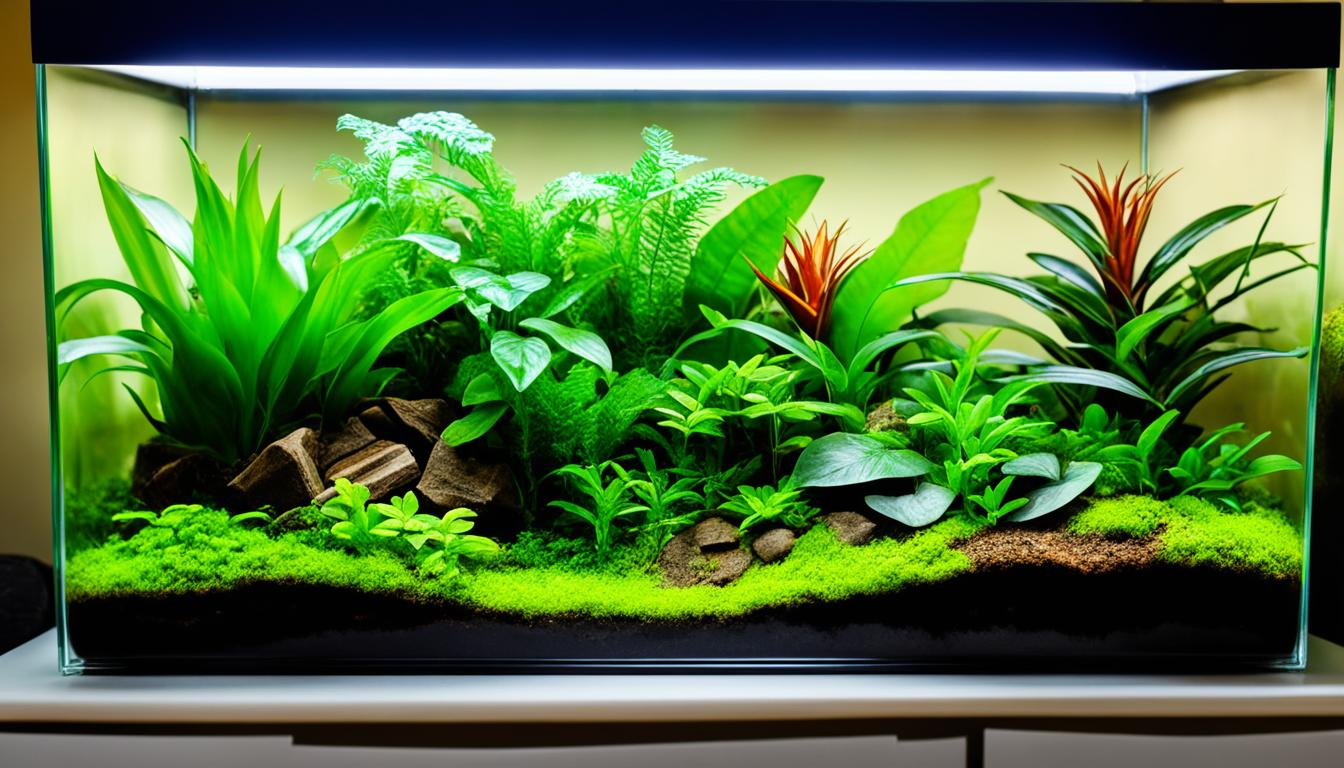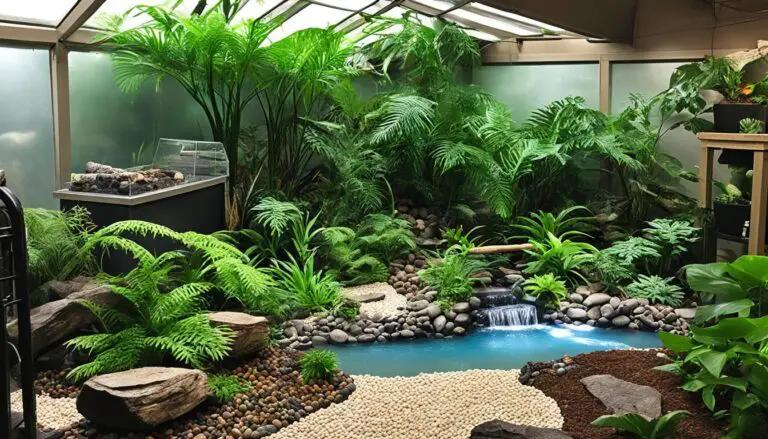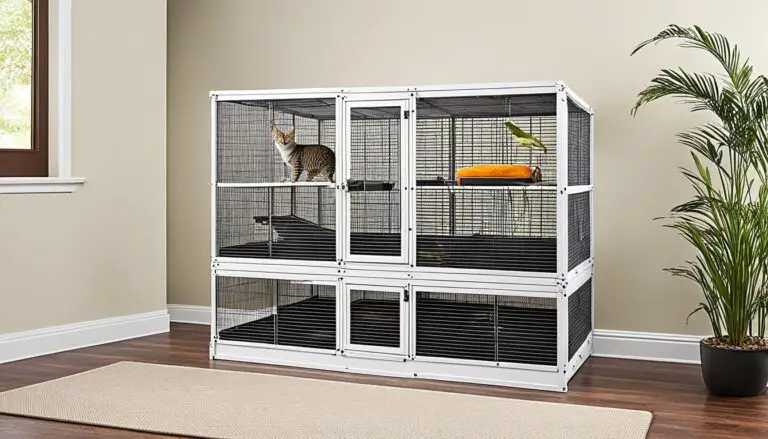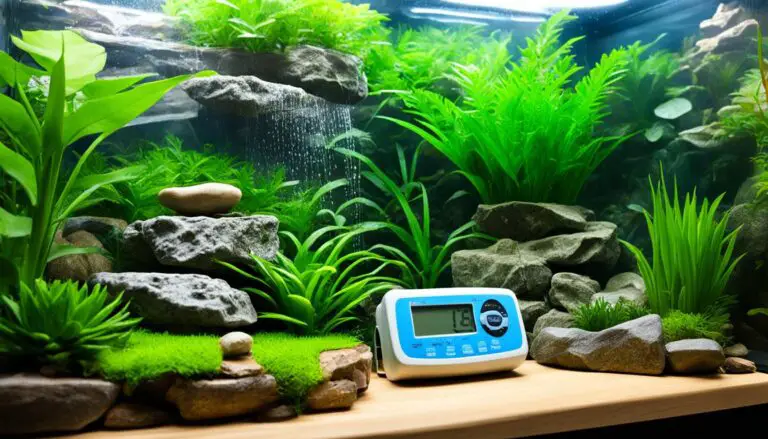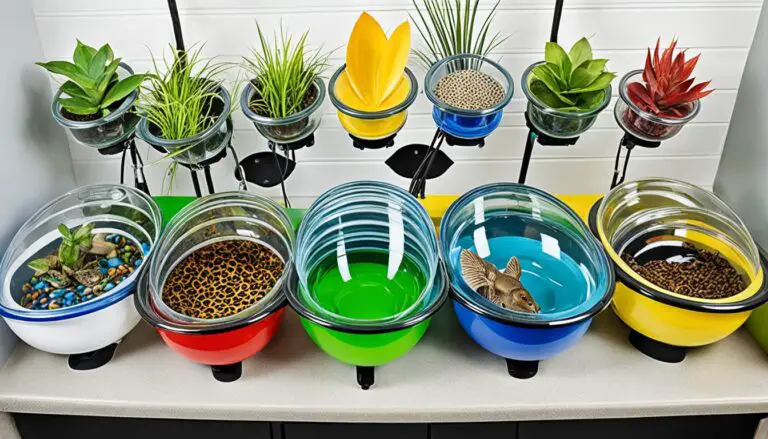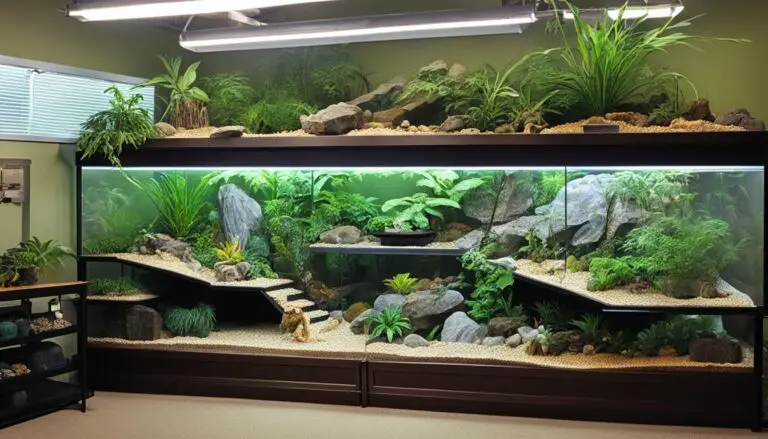Optimal Exotic Pet Housing Temperature [Quick Guide]
The temperature and humidity levels of an exotic pet’s environment are crucial for their health and well-being. Reptiles, amphibians, and other exotic pets are cold-blooded and rely on external sources to regulate their body temperature. It is important to maintain the optimal temperature range for different species, which typically falls between 70 to 85°F. Additionally, the humidity levels also play a significant role, with different animals requiring varying levels of humidity. Consulting the specific temperature and humidity needs of each exotic pet is essential to ensure their safety and longevity.
Key Takeaways:
- Exotic pets, being cold-blooded, rely on external sources to regulate their body temperature.
- The optimal temperature range for most exotic pets falls between 70 to 85°F.
- Humidity levels also play a significant role, with different animals requiring varying levels of humidity.
- Consulting the specific temperature and humidity needs of your exotic pet is crucial for their well-being.
- Monitoring and controlling the temperature with the right tools helps ensure the comfort and safety of your exotic pet.
The Importance of Temperature and Humidity for Exotic Pets
Proper temperature and humidity control in an exotic pet’s enclosure are vital for their overall health and well-being. As cold-blooded creatures, reptiles and amphibians rely on external sources to regulate their body temperature, making it essential to provide the right conditions in their habitat.
Exotic pets have specific temperature needs that should be met to ensure their comfort, safety, and longevity. The ideal temperature range for most exotic pets falls between 70 to 85°F, although some species may require slightly higher or lower temperatures. It’s important to note that certain species, like reptiles, benefit from basking areas within their enclosure that reach higher temperatures, often exceeding 100°F. These warm areas enable them to thermoregulate effectively.
Temperature isn’t the only crucial factor for exotic pets—humidity levels also play a significant role in their well-being. Different species have varying humidity requirements, ranging from arid desert conditions to humid rainforest-like environments. Monitoring and maintaining the appropriate humidity levels is essential to prevent health issues such as dehydration or respiratory problems.
Understanding the specific temperature and humidity needs of your exotic pet is essential. By researching, consulting experts, or referring to reliable pet care sources, you can ensure that your beloved pet’s enclosure offers them the ideal environment to thrive.
“Proper temperature and humidity control are key to providing the best living conditions for your exotic pet. Understanding their specific needs will help you create a comfortable and safe habitat for them.”
Temperature and Humidity Guidelines for Different Exotic Pets
To give you a better idea of the temperature requirements, here are some general guidelines for common exotic pets:
| Exotic Pet | Ideal Temperature Range (°F) | Ideal Humidity Level |
|---|---|---|
| Bearded Dragon | 75 – 85 | 30% – 40% |
| Crested Gecko | 70 – 80 | 50% – 70% |
| Corn Snake | 70 – 85 | 40% – 60% |
| Red-footed Tortoise | 80 – 90 | 60% – 80% |
These temperature and humidity guidelines are just a starting point. Each species may have specific requirements, so it’s crucial to research and consult with experts or veterinarians to ensure you provide the most suitable environment.
By maintaining the proper temperature and humidity in your exotic pet’s enclosure, you can create a habitat that mimics their natural habitat, benefiting their overall health and well-being. Remember, maintaining these vital elements contributes to their comfort, safety, and ultimately, their happiness.
Temperature and Humidity Guidelines for Different Exotic Pets
Different species of exotic pets have unique temperature and humidity requirements to ensure their well-being and health. It is essential to understand the specific needs of your pet to create a suitable housing environment. Below are some temperature guidelines for popular exotic pets:
Desert-Dwelling Species:
Desert-dwelling species, such as the Mojave Rattlesnake and Horned Lizard, thrive in temperatures ranging from 65 to 85°F. These pets require a warm and arid environment, with basking areas reaching temperatures of 90 to 110°F. Providing adequate heat sources, such as heating pads or overhead heat lamps, is crucial for their comfort and overall health.
Tropical Species:
Tropical species, such as the Boa Constrictor and Iguana, prefer temperatures between 70 to 85°F. These pets require a slightly lower temperature range compared to desert-dwelling species. Providing a consistent and warm environment with proper heating sources, such as ceramic heat emitters or under-tank heating pads, is necessary for their well-being.
Consult the specific temperature and humidity guidelines for your particular exotic pet to ensure their housing meets their unique requirements. Different species may have specific temperature needs, so it is important to research and understand their care requirements.

Monitor and Control Temperature with the Right Tools
To effectively monitor and control the temperature in your exotic pet’s enclosure, it is important to invest in the right tools. Wireless thermometers and hygrometers, such as SensorPush, constantly monitor the temperature and humidity levels in the terrarium and send data to your smartphone. This allows you to accurately track and make necessary adjustments to maintain the optimal temperature for your pet. Monitoring and controlling the temperature is crucial to ensure the well-being and survival of your exotic pet.
“Accurately monitoring and controlling the temperature in your exotic pet’s habitat is essential for their health and happiness. Investing in wireless thermometers and hygrometers provides real-time data and allows you to make immediate adjustments to maintain the perfect temperature and humidity levels.”
Temperature Considerations for Common Household Pets
While exotic pets have specific temperature needs, it’s equally important to consider the temperature requirements of our beloved common household pets. Dogs and cats, being part of our families, deserve a comfortable and safe environment that supports their well-being. Let’s take a closer look at the optimal house temperatures for dogs and cats to ensure their comfort throughout the year.
Best House Temperatures for Dogs
Dogs are known for their adaptability to different climates, but providing the right temperature range in our homes can greatly enhance their overall comfort. Here are some guidelines for maintaining the best house temperatures for dogs:
| Season | Ideal Temperature Range |
|---|---|
| Summer | 75 to 78°F |
| Winter | 68 to 72°F |
Dogs may prefer slightly cooler temperatures during the summer to avoid overheating, while in winter, a slightly warmer environment helps them stay cozy. Monitoring their behavior and adjusting the temperature accordingly will ensure their well-being and comfort.
Best House Temperatures for Cats
Cats, known for their independent nature, also have specific temperature preferences that we should consider. Here are some guidelines for maintaining the best house temperatures for cats:
| Season | Ideal Temperature Range |
|---|---|
| Summer | 86 to 88°F |
| Winter | Above 70°F |
Cats can tolerate warmer temperatures during the summer months, but it’s important to provide proper ventilation and ensure they have access to cool areas with shade. In winter, it’s crucial to avoid exposing them to temperatures below 70°F to prevent discomfort and potential health issues.
Providing a comfortable indoor temperature for your pets is not only essential for their physical well-being but also contributes to their overall happiness and contentment.
Remember, these temperature ranges serve as general guidelines for most dogs and cats. However, individual preferences may vary based on factors such as breed, size, age, and health conditions. Monitoring their behavior and ensuring they have access to warm or cool areas according to their needs will help maintain their optimal comfort.

By paying attention to the temperature needs of our common household pets, we can create a nurturing environment where they can thrive. Ensuring they are neither too hot nor too cold will contribute to their overall well-being and show them how much we care.
Temperature Considerations for Other Exotic Pets
When it comes to exotic pets, maintaining the right temperature is crucial for their health and well-being. Different species have varying temperature requirements to thrive in their environments. Let’s explore the optimal house temperatures for birds, fish, and other exotic pets.
Best House Temperatures for Birds
Birds, especially tropical species, thrive in temperatures ranging from 65 to 85°F (18 to 29°C). Providing a comfortable and consistent temperature within this range helps keep your feathered friend happy and healthy. To regulate the temperature for your bird, consider using a space heater or heating pad, especially during colder seasons.
Best House Temperatures for Fish
Just like birds, fish also require specific temperatures to thrive in their aquariums. Tropical fish species, in particular, need water temperatures between 76 to 80°F (24 to 27°C) to maintain their well-being. Ensure you have a reliable aquarium heater to maintain the ideal water temperature consistently.
Best House Temperatures for Exotic Pets
In addition to birds and fish, other exotic pets have their own preferred temperature ranges. Small mammals, such as rabbits, hamsters, and gerbils, prefer temperatures between 65 to 75°F (18 to 24°C). Providing a cozy and warm habitat for these furry friends helps them stay comfortable throughout the year.
Tortoises and turtles, on the other hand, may require a range of temperatures depending on their specific species. It’s crucial to research and provide the appropriate temperature gradient in their habitat to accommodate their thermoregulation needs.
Understanding and meeting the specific temperature needs of different exotic pets is essential for their overall health and well-being. Be sure to consult reputable sources or seek guidance from experienced pet owners to ensure you create the optimal environment for your unique exotic pet.
By maintaining the right temperature for your exotic pets, you are providing them with a comfortable and safe living space, allowing them to thrive and enjoy a high quality of life.
Conclusion
Maintaining the optimal temperature in your exotic pet’s housing is crucial for their health and well-being. Different species have unique temperature requirements, and it’s essential to provide the right temperature range for their specific needs. By monitoring and controlling the temperature using tools like wireless thermometers, you can ensure that your exotic pet is in a comfortable and safe environment.
Remember to consult specific temperature guidelines for your pet and make necessary adjustments to provide them with the best possible living conditions. This includes considering the temperature range, basking areas, and humidity levels that your exotic pet requires. Creating an environment that closely mimics their natural habitat will help promote their overall health and happiness.
Investing in reliable temperature control tools, such as the SensorPush wireless thermometer and hygrometer, allows you to accurately monitor the temperature and humidity levels in your pet’s enclosure. This enables you to make timely adjustments and maintain the ideal conditions for your exotic pet’s well-being. By being proactive in maintaining the proper temperature, you can ensure a long and healthy life for your beloved exotic pet.
FAQ
Why is the temperature and humidity level important for exotic pets?
What is the optimal temperature range for exotic pets?
Do different exotic pets have different temperature requirements?
How can I monitor and control the temperature in my exotic pet’s enclosure?
What temperature considerations should I take into account for common household pets?
Do other exotic pets have specific temperature needs?
Source Links
- https://www.sensorpush.com/articles/temperature-and-humidity-monitoring-for-pet-reptiles-and-amphibians
- https://tomsbigspiders.com/2015/01/19/humidity-temperature-and-tarantulas/
- https://www.familyhandyman.com/article/best-house-temperature-for-pets/
Peter Stones is the founder of Exotic Pets Place, the leading online resource for exotic pet care information.
With over 10 years of hands-on exotic pet ownership experience, he is deeply passionate about sharing his expertise to help others properly care for their unusual pets.
When he's not writing extensively researched articles or connecting with fellow exotic pet enthusiasts worldwide, you can find Peter at home tending to his own beloved menagerie of exotic animals.

